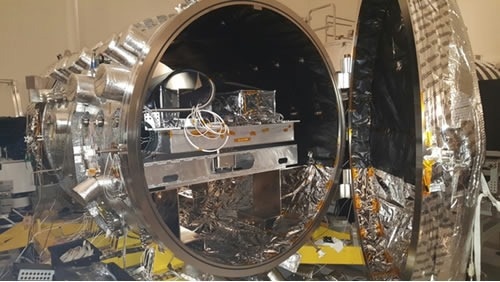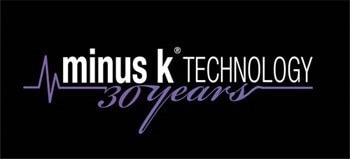The Nancy Grace Roman Space Telescope (Roman), formerly the Wide Field Infrared Survey Telescope (WFIRST), is a NASA space observatory scheduled to launch into space by May 2027.
The Roman Space Telescope will hold two instruments: the Coronagraph Instrument, which advances technologies for spectroscopy and extreme high contrast imaging from space; and the Wide Field Instrument (WFI), which emphasizes studying the evolution of the universe and understanding what solar systems beyond our own are like.
In 1998, scientists discovered that the rate of universe expansion is accelerating. This caused researchers to reconsider their theories about the formation of the universe.
Visible matter accounts for approximately 5% of the contents of the universe. Comparatively, 27% of the universe comes from dark matter, which does not absorb or emit light. Dark matter can only be detected through its gravitational effects on visible matter.
A significant part of Roman’s mission will be used to monitor hundreds of thousands of distant galaxies for supernova explosions. These can be used to study the universe’s expansion and dark energy.
Roman’s primary instrument is the Wide Field Instrument (WFI). This will have a field of view 100 times greater than the widest exposure of the Hubble Telescope, enabling it to capture more sky with less observing time. During the first five years of observations, Roman will image over 50 times as much sky as Hubble has covered over 30 years. Throughout the mission's lifetime, the WFI will obtain light measurements from a billion galaxies.
Shading Starlight
Discovering Earth-like planets with atmospheres may come down to the ability to block starlight from a telescope. This may sound like a tall order, but starlight has been blocked since 1931 when Bernard Lyot, a French astronomer, introduced the first coronagraph. A coronagraph is an attachment to a telescope that blocks out the direct light from a star. This allows nearby objects to be observed that otherwise would be hidden in the star’s bright glare.

NASA's Roman Space Telescope. Image Credit: NASA/GSFC
The Roman Space Telescope utilizes a Coronagraph Instrument, which is a highly complex and multi-layered piece of technology. This intricate system consists of prisms, masks, detectors, and two self-flexing mirrors (deformable mirrors). These mirrors are active components, meaning they change their shape in real time, accommodating incoming light to compensate for tiny changes in the telescope’s optics and observatory vibrations.
In conjunction with high-tech “masks” and other components — known collectively as “active wavefront control” — the deformable mirrors eliminate the interference caused by light waves that bend around the edges of the coronagraph’s light-blocking elements. This results in greatly dimmed starlight, while faintly glowing objects (that were previously not viewable) will appear relatively undimmed.
Testing Critical Components
The High-Contrast Imaging Testbed (HCIT) facility at NASA’s JPL is a large optical laboratory, hosting three optical testbeds inside vacuum chambers designed to advance coronagraph technologies for space.
The Roman testbed is a 6 ft-wide vacuum chamber with a 7.5 ft cylindrical section, capable of accommodating tables up to 8 ft in length after considering the outward bulge of the end cap doors.
Data and power cables, optical fibers, and water lines are fed through sidewall ports. Two ports are taken by camera umbilicals that connect lab air to the bench-mounted camera enclosures. This allows the use of Andor Neos CMOS cameras as science detectors in the chamber, despite not being compatible with vacuums.
The legs have a manual adjustment range, allowing them to be returned and account for changes in weight distribution on the table after hardware modifications.
The testbed includes an array of instruments, including temperature sensors and accelerometers, with plans to add contamination monitors. The temperature of the chamber wall is constant, within ±0.1 K, using a simple control system. More complex controls stabilize the Deformable Mirror (DM) temperature to milli-K levels.
Within Roman, the bench and optical telescope assembly (OTA) sub-bench are on independent PI thermal control loops, allowing the mean bench temperature to remain stable at 30 mK P-V under normal conditions. The chamber itself is controlled to a set point above the laboratory ambient by a PID loop implemented with a heater tape insulation layer that can be stabilized to 50 mK P-V.
All optical mounts are constructed from invar with optics bonds within flexure mounts, reducing the effect of residual thermal fluctuations on the system. The two cameras and the DM electronics are the primary heat sources on the table and are cooled using a pair of external water-cooling loops.

The Roman vacuum chamber. Image Credit: Jet Propulsion Laboratory, California Institute of Technology
A telescope simulator on a sub-bench is kinematically mounted to the northwest corner of the bench and simulates the front end of the telescope. This comprises a simulator for the optical telescope assembly, which defines the upstream pupil and provides light that is not collimated, and a jitter mirror (JM) to inject tilt/tip errors into the coronagraph in a controlled manner.
The Decadal Survey Testbed (DST) is a cutting-edge testbed designed to demonstrate the coronagraph technologies needed for a mission that will follow Roman.
This mission aims to image and characterize Earth-like exoplanets directly and requires two deformable mirrors (DMs) for wavefront control, a stellar source simulator, coronagraph masks, an imaging camera, and a wavefront sensor.
The DST’s optomechanical design reduces disturbances from the laboratory and local environment.
At its foundation, the DST comprises a carbon-fiber optical table that remains stable during thermal fluctuations. It also consists of active temperature control and Minus K’s SM-1CV Negative-Stiffness Vibration isolators. These are tailored for use inside the vacuum chamber to minimize the sensitivity to laboratory and micro-seismic vibrations.
Testing Critical Components
The Roman Space Telescope will observe hundreds of millions of stars every 15 minutes, for months at a time — a capability no other space telescope has. Roman will detect hundreds of interesting cosmic objects, including rogue planets, dwarf planets, brown dwarfs (too massive to be considered as planets but not quite massive enough to ignite as stars), asteroids, comets, and stellar corpses, including black holes and neutron stars, which are left behind when stars exhaust their fuel within our solar system.
Edited by Steve Varma.

This information has been sourced, reviewed, and adapted from materials provided by Minus K Technology.
For more information on this source, please visit Minus K Technology.